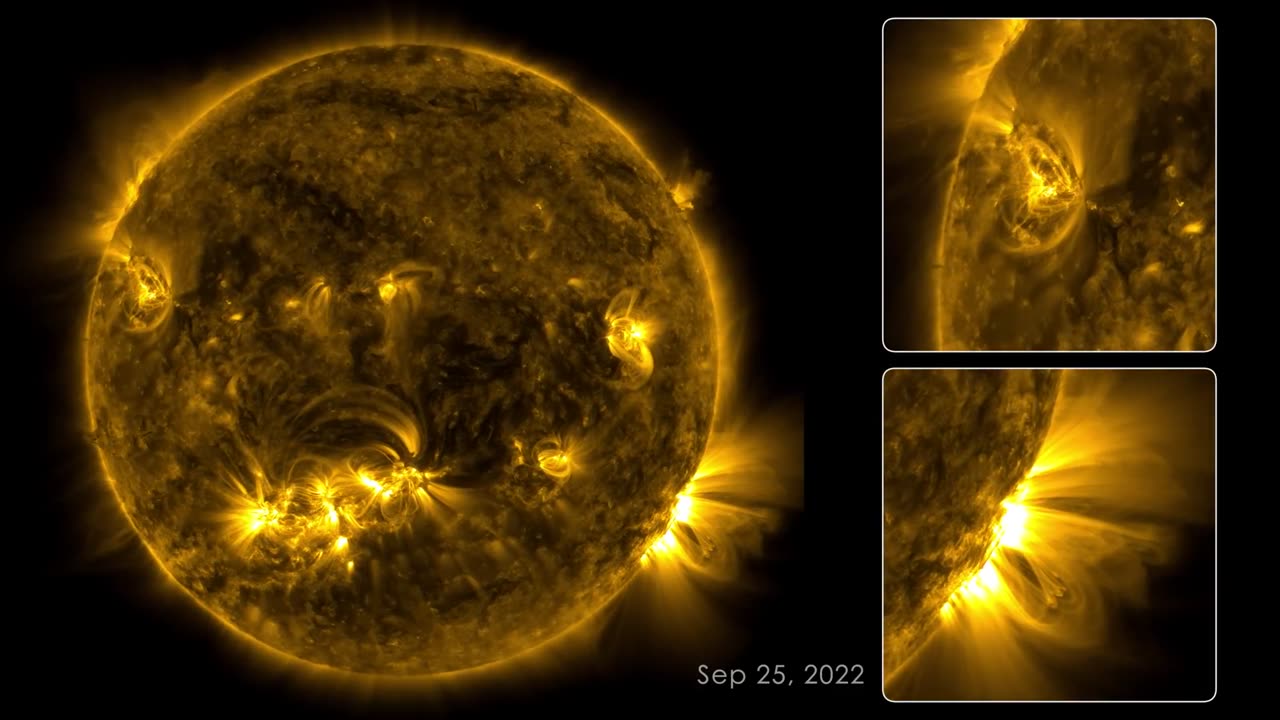Premium Only Content

133 Days on the Sun
Solar activity spanning from August 12 to December 22, 2022, as observed by NASA's Solar Dynamics Observatory (SDO). Orbiting Earth, the SDO has consistently captured high-resolution (4K x 4K) images of the Sun for nearly 13 years. This data has led to numerous insights into the Sun's behavior and its impact on the solar system. Equipped with a trio of instruments, the SDO captures a Sun image every 0.75 seconds. Among these instruments, the Atmospheric Imaging Assembly (AIA) captures images at 10 different wavelengths of light every 12 seconds. The following 133-day sequence spotlights images taken at 17.1 nanometers, an extreme-ultraviolet wavelength exposing the Sun's outermost atmospheric layer known as the corona.
This 133-day interval, condensed into a 59-minute movie, is created by assembling images taken 108 seconds apart. It showcases the passage of bright active regions across the Sun's surface as it rotates. The Sun completes a rotation roughly every 27 days. Extending above these radiant areas are magnetic field-induced loops containing superheated plasma. These bright regions are also the origin of solar flares, manifesting as intense flashes during magnetic field realignments, a process termed magnetic reconnection.
While the SDO has vigilantly focused on the Sun, there have been instances of missed observation. Certain dark frames in the video result from Earth or the Moon blocking the SDO's view, passing between the spacecraft and the Sun. Additional disruptions arise from instrument downtime or data inaccuracies. Transmitting 1.4 terabytes of data daily, the SDO's images sometimes display an off-center Sun, a result of instrument calibration.
The SDO, alongside other NASA missions, will persist in monitoring the Sun, unveiling further insights about our cosmic context and ensuring astronaut and asset safety. The accompanying music is a continuous blend sourced from Lars Leonhard's "Geometric Shapes" album, used with the artist's permission. The video is freely shareable and downloadable at the provided NASA link. While the video content can be shared without explicit permission, certain components such as the music and select imagery may be subject to permissions and usage limitations. For more information on NASA's media guidelines, visit their official website. The visual description of the video includes the Sun on the left side, depicted in golden yellow hues with intermittent wisps and brightness variations. The Sun rotates steadily, requiring 12 minutes per full rotation in the time-lapse. Bright regions shift and flicker akin to small fires, accompanied by dynamic loops extending above. The right side of the frame features two outlined squares with magnified views of intriguing Sun regions.
-
 LIVE
LIVE
SpartanTheDogg
11 hours agoPro Halo Player
596 watching -
 23:23
23:23
MYLUNCHBREAK CHANNEL PAGE
1 day agoAustralia Was Found
56.7K43 -
 1:41:45
1:41:45
The Connect: With Johnny Mitchell
11 hours ago $9.40 earnedMexican Cartels Are Moving MORE Drugs Than Ever, Going To WAR On The Government (Emergency Update)
30.2K4 -
 6:54:01
6:54:01
MissesMaam
7 hours agoFinishin' Red Dead Redemption 💚✨
47K6 -
 34:44
34:44
LFA TV
5 days agoMIRACLES DO HAPPEN!
67.5K1 -
 LIVE
LIVE
GamersErr0r
2 hours ago $0.68 earnedMooning My Community
303 watching -
 2:22:59
2:22:59
Banks Atkin Live
5 hours agoChilling playing Games & Vibin
47.6K1 -
 LIVE
LIVE
Dragoon_B
7 hours agoNothing crazy - just Counter Strike + Valorant
76 watching -
 18:03
18:03
Stephen Gardner
6 hours ago🔥YES!! Trump GETS HUGE win in 4th district court!!
65.1K375 -
 4:40:54
4:40:54
G3T
5 hours ago🔴GET | not saying it
17K